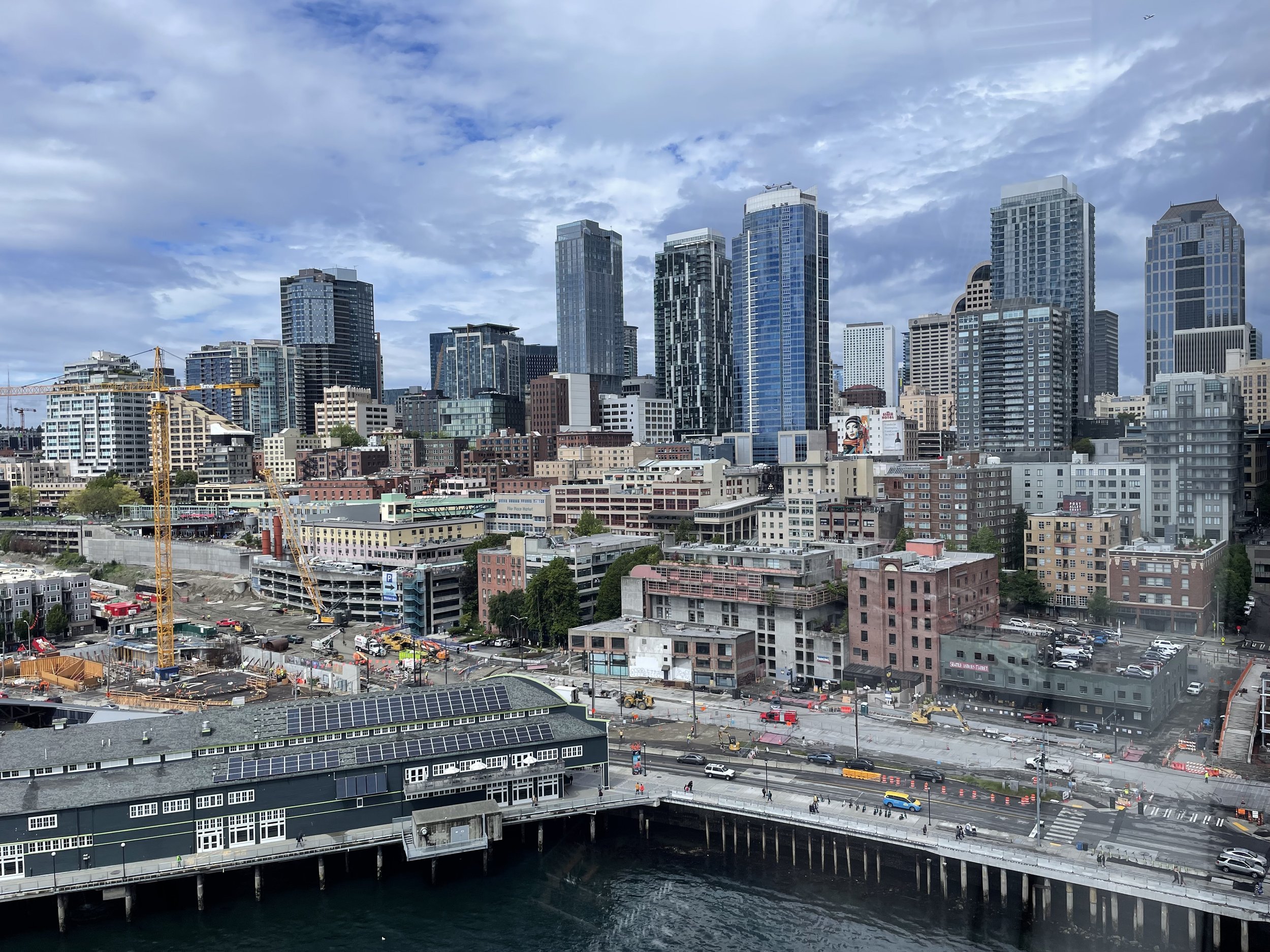
Self-Led Education Portal:
Getting Started
GETTING STARTED | ENERGY MANAGEMENT PLAN | OPERATIONS & MAINTENANCE | ENERGY REPORTING & TARGETS | EMISSIONS REDUCTION
Identifying Buildings Required to Comply
1) Did you receive a letter from the WA Department of Commerce?
Original letters were addressed to building owners according to the address on file with the county assessor’s office, for Tier 1 buildings identified as larger than 50,000 sq. ft.
If you did not receive a letter or misplaced it, you can request a copy here.
2) Do you think your building may be exempt from the WA State Clean Buildings Law?
To have your building exempted, you must apply to Commerce. Learn more here.
Meeting Compliance Deadlines
Compliance deadlines are tiered according to the size of the building as shown in the figure below. For Tier 1 buildings, documents and benchmarking requirements must be in place ONE YEAR BEFORE the compliance deadline.
To help you decide when you need to start working on compliance documentation and benchmarking, check out our timing tool.
Note: In 2022, WA State expanded the Clean Buildings requirements to cover smaller commercial buildings (20,000 - 50,000 sq. ft.) and multifamily buildings 20,000 sq. ft. and larger. These buildings will be phased into all requirements except the EUIt requirement starting in 2027.
[Image source: Washington State Department of Commerce]
Understanding Compliance Requirements
The WA State Clean Buildings Law includes the following three key components. Even if your building already meets the energy use intensity (EUI) performance target as described in the building performance section, you must also submit an energy management plan and operation and maintenance program for each building over 20,000 sq. ft.. Each of these three requirements can be completed at the same time.
The time commitment needed to complete each section will vary by organization. Once you understand your compliance pathway, use our timing tool to better understand the time needed to meet the compliance deadline.
-
Energy Management Plan (EMP)
• Recordings on requirements
• Templates and examples
• How to engage staff
• How to engage occupants
• Training best practices
-
Operations & Maintenance (O&M) Program
• Recordings on requirements
• Templates and examples
• How to create standard operating procedures
• How to identify low-cost/no cost opportunities
• How to leverage existing processes
-
Energy Reporting & Targets
• ENERGY STAR Portfolio Manager training to benchmark or fix errors in existing accounts
• Understand the building performance compliance options
• Calculating your building's required energy use intensity target (EUIt)
• Meeting the EUIt if the building’s energy performance is worse than the EUIt (Tier 1 only)
• FAQs on common building set ups
• Carbon emissions reduction assistance
• Assistance finding incentives and financing
Building an Energy Team
Compliance with WA Clean Buildings will be a team effort for your organization that requires some roles be filled by personnel with specific credentials. Below you will find resources on the roles defined by the WA State law and energy team best practices.
-
Your organization may choose to internally create and endorse all compliance documentation if desired. You may need to train or certify team members to fulfill some roles as defined by the law.
Owner: Building owners are ultimately responsible for compliance and will be subject to the State fines if the law requirements are not met.
Signs compliance documents? Yes
Requires a certification? No
Energy Manager: The energy manager will be your WA State Clean Buildings compliance lead that will manage all aspects of compliance and is critical to maintaining the records.
Signs compliance documents? Yes
Requires a certification? No
Qualified Person: For Tier 1, the qualified person is responsible for calculating the energy use intensity (EUI) target (if applicable) and confirming that the organization is accurately implementing the energy management practices laid out in the law.
Signs compliance documents? Yes
Requires a certification: Yes (see below)
Licensed professional architect or engineer in the jurisdiction where the project is located
Qualified Energy Auditor (see below for more info)
Qualified Energy Manager (QEM): For Tier 2, the QEM is responsible for determining whether the building seeking compliance has an energy use intensity target (EUIt), establishing the EUIt and submitting forms as specified in Normative Annex Y.
Signs compliance documents? Yes
Requires a certification: No (see below)
Requires training? Yes (see below)
Has two years of experience, including educational and/or professional experience, with commercial building operations and/or building energy management in addition to successful completion of clean buildings Tier 2 training program as specified by the AHJ,
or
Meets the definition of a qualified person
You also have the option to hire an outside party to assist with documentation creation and implementation. You can find a directory of qualified persons here and qualified energy auditors here.
-
Not all buildings require a professional energy audit. If your building does require an audit, the auditor must be a Qualified Energy Auditor that meets one of the following requirements:
A licensed professional architect or engineer in the jurisdiction where the project is located
An energy auditor/assessor/analyst certified by ASHRAE or the Association of Energy Engineers (AEE) for all building types
An energy audit may be required if:
The building will utilize the investment criteria pathway
You plan to utilize early adopter incentives
The building performance is far from the EUI target and your organization needs a pathway to reach the goal
An energy audit may NOT be required if:
Your building is currently meeting the EUI target
You understand what energy efficiency measures need to be completed to meet the goal

